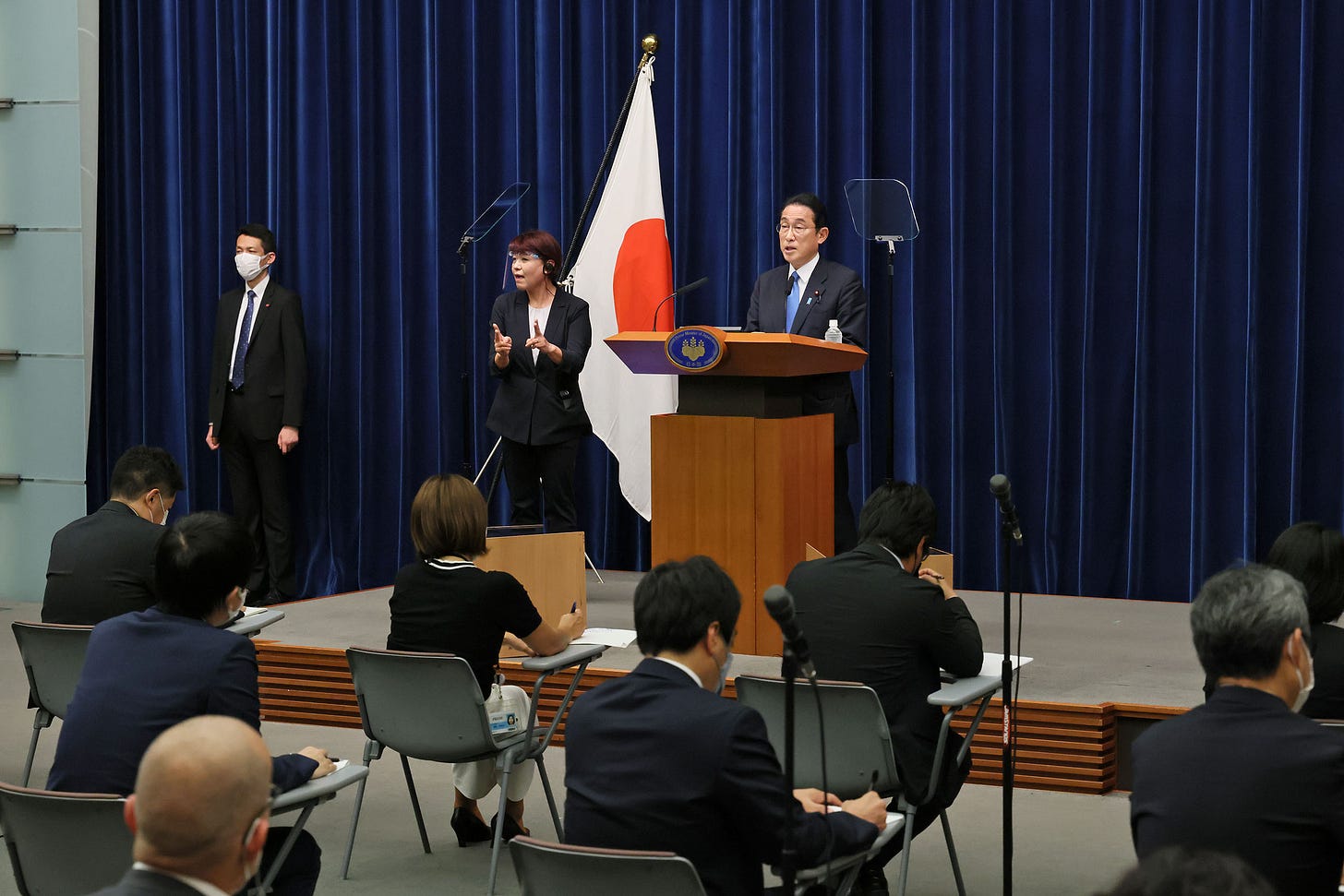Kuroda and Kishida are preparing to live with yen weakness
Bank of Japan Governor Kuroda Haruhiko remains unwilling to adjust the BOJ’s monetary easing program even as the Federal Reserve has launched a tightening cycle that has roiled global markets. At its policy board meeting this week, the BOJ decided by an overwhelming margin to keep its main policies – its interest-rate targeting Yield Curve Control program and its purchases of financial assets – in place despite concerns about the impact of a weakening yen due to the widening interest-rate differentials between Japan and other major economies. (See the BOJ’s announcements in jp; en.) The BOJ not only left its policies in place, but Kuroda also signaled that he would be willing to add additional easing if necessary.
Kuroda changed his tone on the impact of price increases that have resulted from the yen reaching its lowest levels for more than twenty years. After he was forced to apologize after suggesting that households were beginning to “accept” higher prices, he sounded a more cautionary note on Friday, recognizing that the weaker yen was a negative for Japan’s economy. Although the BOJ expressed the opinion that the inflationary impact of higher prices for imported energy and food will eventually fade, the BOJ expressed concern over the impact of the weaker yen on the economy and the speed of exchange rate movements.
But it is also unclear whether there is anything that Kuroda’s BOJ or the Kishida government can do about yen weakness now that the BOJ has opted against changes to its easing policies. Oral intervention by government and central bank authorities – including a joint statement after a meeting of Finance Ministry, Financial Services Agency, and BOJ officials expressing “anxiety” about the speed of exchange rate movements – is unlikely to matter. As Sakakibara Eisuke, the man known as “Mr. Yen” when he was MOF’s vice minister for international affairs, told Nikkei, unilateral intervention in foreign exchange markets is unlikely to work, particularly without a green light from the United States (which, given inflation in the US, would probably not be interested in a relatively weaker dollar to help the yen). Nor, for that matter, could Tokyo expect much support from elsewhere in the G7, since Japan has, after all, decided to stay on the course on monetary easing even as other central banks tighten. The Japanese government may also be reluctant to break with prevailing norms against unilateral foreign exchange intervention.
While the Constitutional Democratic Party and its allies have tried to take advantage of cost-push inflation to dent Prime Minister Kishida Fumio’s standing – the government’s handling of inflation was ostensibly the reason for a no-confidence motion in the final days of the Diet session that ended on 15 June – there is no sign that the electorate is prepared to punish Kishida on this issue. To be sure, polls show that the public is highly dissatisfied with the government’s response to price increases. A new poll by Jiji Press found that 54.1% said they disapproved of the government’s response; only 13.8% approved.1 However, the LDP continues to enjoy an overwhelming lead in polling ahead of the July 10 upper house elections. Kishida may take a lot of hits on the issue during the campaign – parties have offered proposals ranging from stronger wage hikes (LDP and Komeito) to monetary policy change (CDP and JCP) to modifying the consumption tax (Ishin, Reiwa, SDP) – but this issue is a perfect illustration that the LDP can benefit from a political “flight to safety” even when the public is dissatisfied with its handling of an issue.
The upshot is that for the foreseeable future the weak yen will be something for Kishida to manage, not something that can be solved. As Kana Inagaki writes in the Financial Times, yen weakness will bring few of the benefits that Corporate Japan once enjoyed from a weaker currency, while burdening households with higher costs for essential goods. The currency’s impact on household and businesses is not without danger for Kishida; even if it does not alter the outlook for the upper house elections, it could weigh on the government’s approval ratings, reducing Kishida’s political strength and leaving him open to challenges from within the LDP. Perhaps there is no better sign that the Kishida government is preparing for a long struggle against the impact of a weaker yen than the prime minister’s announcement on 15 June that he will stand up a new headquarters concerning prices, wages, and livelihood issues. It is not entirely clear what the new headquarters will do, but we should anticipate that the government’s playbook will include more stimulus packages to aid households and small businesses (a LDP parliamentarians’ group has called for ¥50 trillion in fiscal stimulus); a government-led campaign to encourage electricity conservation; and continuing efforts by the Kishida government to raise wages, including the minimum wage.
Kuroda showed this week that his commitment to his nine-year-old monetary easing program remains ironclad and that he is undaunted by cost-push inflation that he believes to be transitory. Investors should not assume that the Kishida government will be any less unmovable. There may be more pain to come, but do not underestimate the government’s willingness to throw extraordinary measures to provide relief to key political constituencies to avoid monetary policy normalization and the difficult questions it would raise about the future of Japanese fiscal policy.
The Kishida government’s approval rating also fell just below fifty percent in the Jiji poll, but Jiji is usually an outlier and its net approval remains comfortable.




